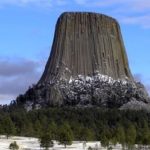FDA regulation doesn’t just inconvenience Americans – it puts their lives at risk
Back in January, President Donald Trump vowed to cut the Food and Drug Administration’s (FDA) regulations by 75-80 percent, a dramatic policy shift from his predecessor who oversaw regulatory costs skyrocket to more than $100 billion annually. As debate centers on Dr. Scott Gottlieb, the president’s nominee to be the next FDA commissioner, Americans should follow this process closely.
No drug can be marketed in the United States without FDA approval. Over the years, the FDA kept numerous drugs off the market that were approved in other developed countries. According to an article published by the CATO Institute, one doctor estimates that these drugs could have prevented 200,000 American deaths over the last 30 years. One example is pirfenidone, a drug to treat pulmonary fibrosis, which didn’t get approved in the United States until 2014 even though it was marketed in Japan in 2008, Europe in 2011, and Canada in 2012. The FDA was advised by its own advisory committee to approve the drug in 2010, but the agency waited another four years after demanding yet another study on the matter.
Between 2010 and 2014, 150,000 Americans died from idiopathic pulmonary fibrosis, a disease that may have been treatable with this drug. Patients should not be banned from trying experimental medication if they and their doctors believe it is the best choice. The best way to speed up the process is for the FDA to allow the free market to function. The more power we give the FDA, the higher the risk of the agency cracking down on states that allow more freedom to terminally ill patients to make decisions for themselves.
This isn’t a conservative or liberal issue. This is an issue of saving lives and allowing sick Americans the right, with appropriate counseling on the risks, to make informed choices about trying experimental therapies.
The Boston Globe reported a troubling story about a woman who had two sons, both diagnosed with the terminal disease muscular dystrophy. The FDA allowed one of her sons to improve with the help of an experimental new drug, while forcing her to watch idly as her other son’s condition continued to worsen. Her younger son, Max, nine years-old at the time, qualified for a clinical trial of the experimental drug eteplirsen, while her older son, Austin, 12 at the time, did not. After 16 weeks, Max began to improve, which caused her to try to speed the FDA’s approval process for the drug.
The mother submitted an application for Austin again in 2013, and he was finally allowed to participate in a trial beginning in 2014. The FDA, however, didn’t approve the drug for everyone else for another two years.
Americans want safe drugs, but no one wants a bloated bureaucracy at the FDA to decide which terminally ill patients can and cannot benefit from a medicine that seems to be working. Giving this medicine to both sons earlier would have allowed them to improve together, but FDA regulators took away the right of this family and their doctor to make that decision.
There are many more examples. As the CATO article reports, individuals with Alzheimer’s were denied THA, individuals with cardiac problems had to wait for beta-blocker approval, individuals with kidney cancer were denied Interleukin-2, and AIDS patients died while the FDA debated whether AZT was cost-effective.
Multiple surveys by the Competitive Enterprise Institute show that medical professionals disapprove of the FDA’s slow pace in approving promising new drugs. A majority of Orthopedic Surgeons have said FDA’s approval process is too slow and hurts patients. A staggering 70 percent believe the current law should be changed to allow physicians access to unapproved therapies.
This debate is over whether individuals should have autonomy to make informed decisions about medical procedures, or whether an overly cautious federal agency can prevent them from trying what their doctor thinks is best. The solution is to get the federal government out of people’s lives and drastically cut the FDA’s role. Unelected bureaucrats who don’t know the individuals involved or the unique circumstances of the impacted families should not be making life-and-death decisions.
President Trump has signaled he wants to reform and streamline agencies’ regulatory power. In February, the president signed an executive order that requires all federal agencies to create a task force to help “alleviate unnecessary regulatory burdens placed on the American people.” The FDA is a prime target for such reform.
In 2012, Dr. Gottlieb, said that the review culture at the FDA needs to change to encourage innovation. He has also long been supportive of deregulation. Let’s hope he follows suit with what President Trump has promised to do and implements common sense reforms at FDA to give patients more freedom to make decisions for themselves.
